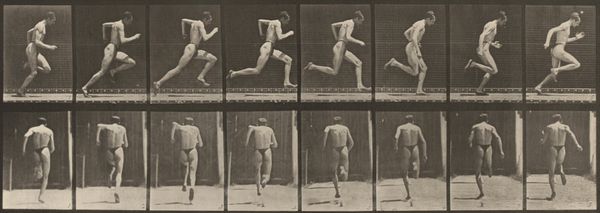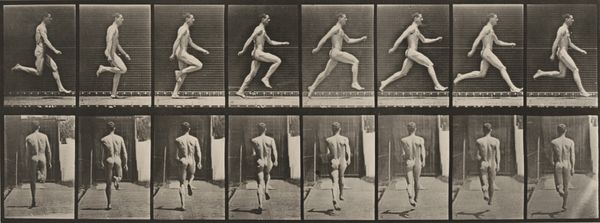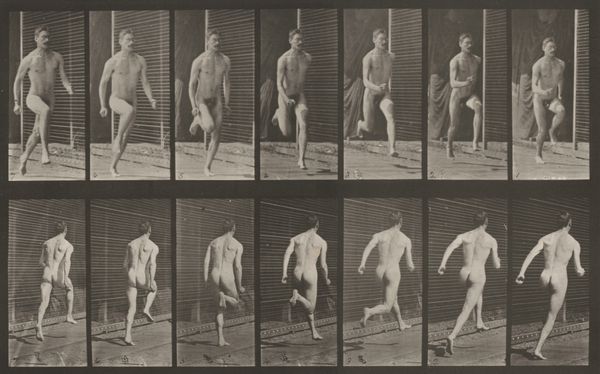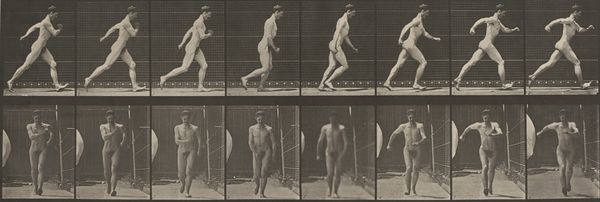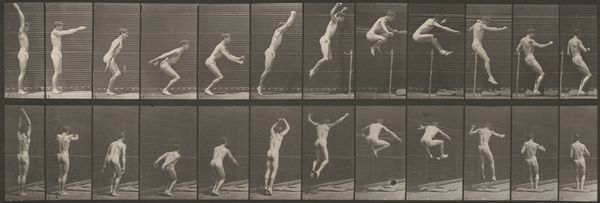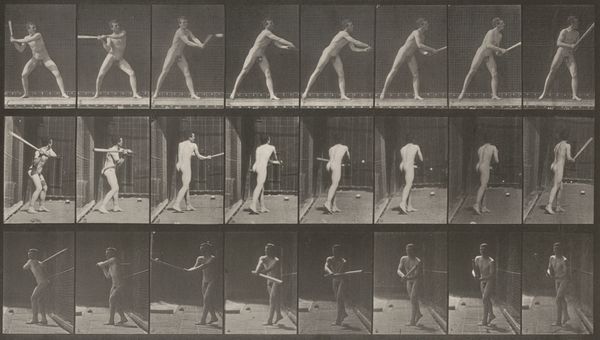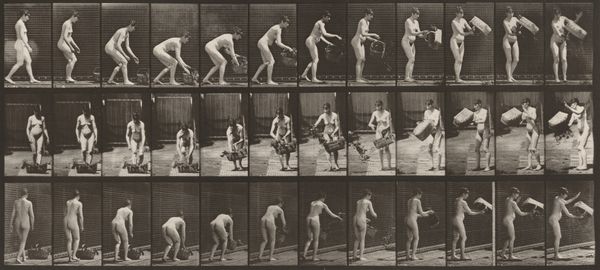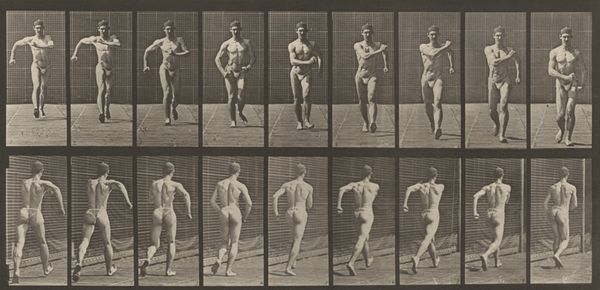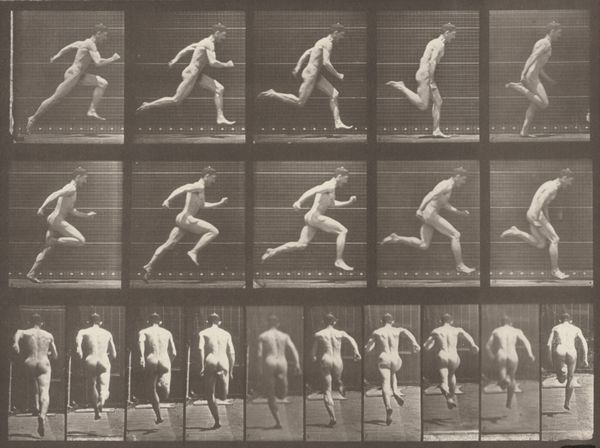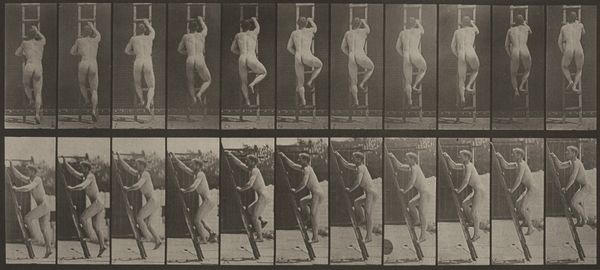
print, photography
#
kinetic-art
# print
#
photography
#
nude
#
realism
Dimensions: image: 13.45 × 45.4 cm (5 5/16 × 17 7/8 in.) sheet: 47.6 × 60.2 cm (18 3/4 × 23 11/16 in.)
Copyright: National Gallery of Art: CC0 1.0
Curator: We're looking at Eadweard Muybridge's "Plate Number 68. Running," a photograph from 1887. Editor: The subject appears frozen in time, like a figure trapped in amber. There is an echoic cadence to the figure, rendered sequentially in different stages of his run. Curator: The photograph presents a series of individual images that break down the act of running into discrete phases. Muybridge aimed to analyze and capture motion scientifically. What do you read into this rendering, beyond science? Editor: There’s something heroic about it, though clinical, despite the photographic process and rationalist composition. The linear nature of the arrangement also conveys progress, the notion of perpetual and forward movement, but it may be aspirational, in that, in our earthly state, nothing lasts forever. The use of grayscale underscores this elegiac interpretation for me. Curator: Yes, and consider what running symbolizes—the race of life, perhaps, the continuous striving and our culture’s focus on progress and athleticism? Muybridge wasn't just recording; he was contributing to a new visual language and scientific method. Editor: True. Muybridge gives form to our lived experiences of space and temporality through the logic of mechanical reproduction. Yet, within these seemingly rigid forms, the very potential of the photographic print is revealed. Curator: Muybridge reveals how closely intertwined technology and ideology had become by the end of the nineteenth century. Photography both reveals and informs what we know and believe about ourselves, down to even our movement in space. Editor: Seeing the breakdown of a man’s stride evokes introspection on temporality, progress, and the elusive and somewhat sorrowful qualities of continuous and irreversible change. Curator: Indeed. These seemingly objective records resonate profoundly with us even today. Editor: His attempt to distill running into stages—in itself, an analysis of continuous change into a still-life.
Comments
No comments
Be the first to comment and join the conversation on the ultimate creative platform.
